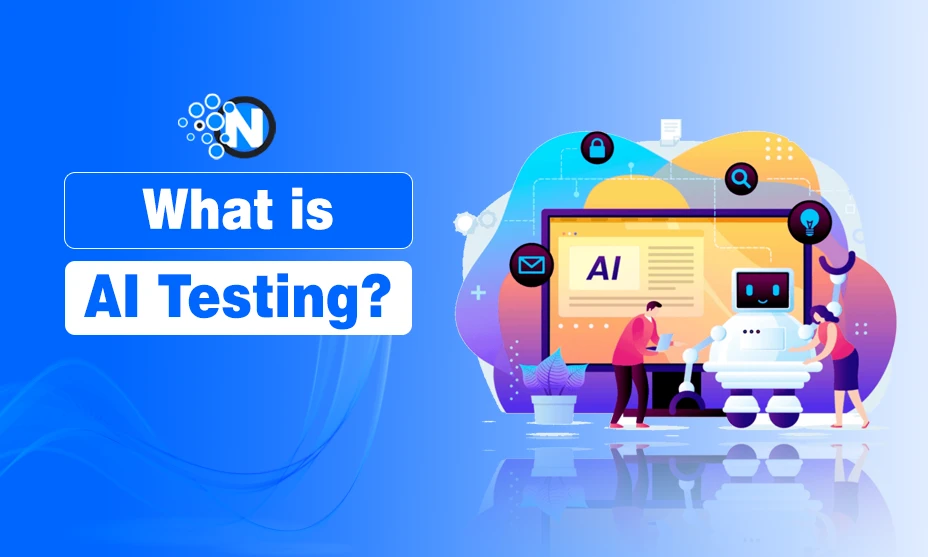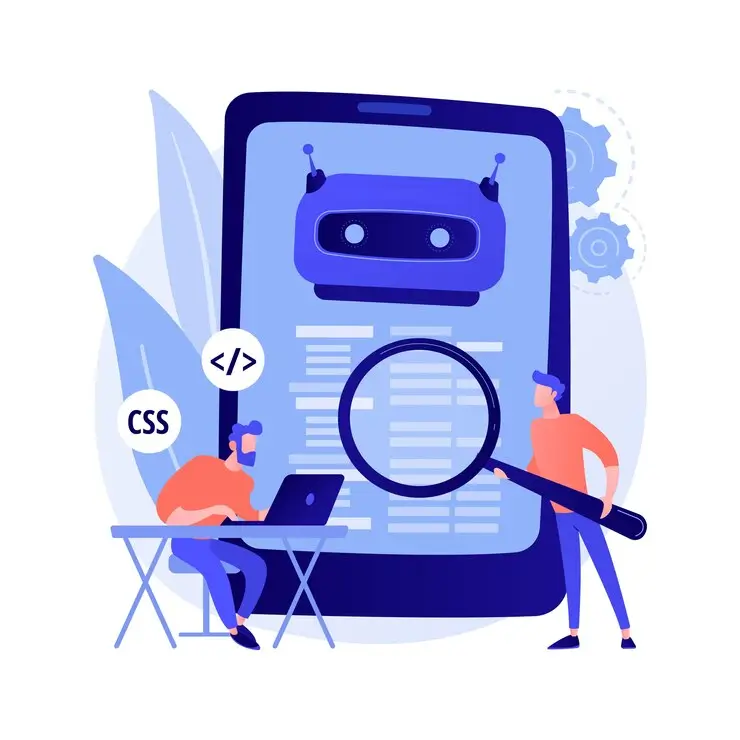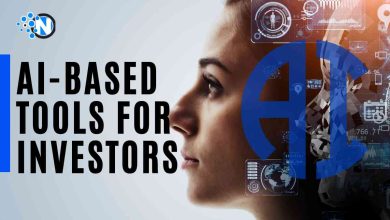
Testing software has always taken a lot of time, but what if it could be faster and smarter? Due to new technology, it’s now possible to automatically create tests that adjust to different situations and catch issues you might have missed with AI testing.
Instead of writing test cases by hand, these systems learn from your code and create tests that cover more areas. In this blog, we will explore how these modern tools are transforming the AI testing process, enhancing its efficiency and reliability. Let’s begin!
What is AI Testing?
AI testing uses Machine Learning and other AI technologies to improve the software testing process. In QA testing, we often combine automation for some tasks with human input for others.
AI testing tools take automation further by not just automating tasks like writing and running test cases but also by simulating user interactions, spotting anomalies, and finding hidden bugs that might be missed during manual testing.
It’s important not to mix AI testing with “testing the AI system,” which is about evaluating how well AI programs work. These programs rely on technologies like Natural Language Processing, computer vision, deep neural networks, and deep learning.

Benefits of AI Testing
Here are the key benefits of AI software testing:
Faster Execution
AI testing increases the procedure by automating routine tasks and enhancing the efficiency of test execution. For instance, it can examine code and specifications to create test cases and automate tasks such as regression testing, which requires tests to be executed repeatedly.
Efficient Test Creation
AI tools use machine learning to create test cases based on application needs, user behavior, and past data. This ensures that all important areas are tested, saves time, and allows testers to focus on more complex tasks like strategic planning.
Easier Test Maintenance
AI testing makes it easier to maintain test scripts. Unlike traditional methods, AI tools can analyze test results, spot patterns, and automatically update test scripts when the application or environment changes. This reduces manual work and keeps test scripts more stable.
Improved Accuracy
AI testing reduces human errors and biases, leading to more accurate results. AI can find hidden defects, detect unusual behavior, and identify potential risks more effectively with the usage of advanced data analysis.
Better Test Coverage
AI testing covers a wider range of test scenarios, including edge cases and user interactions that manual testing might miss. It can also prioritize tests and optimize strategies for more thorough testing.
Cost Reduction
Although AI testing tools necessitate an upfront investment, they can lead to savings over time. Automating testing decreases the hours dedicated to testing, aids in identifying defects sooner, and guarantees improved quality, ultimately conserving time and money for businesses.
How Machine Learning Models Work in AI Testing?
Machine learning (ML) models can make testing more efficient by automating complex tasks and improving the overall process. Here’s how they help in testing:
Test Automation
ML models can automate repetitive testing tasks like regression, load, and UI testing. They analyze past test data to predict the best strategies and identify parts of the application that might fail.
Generating Test Cases
ML can create test cases by learning from existing test data and patterns in the code. This reduces manual work and ensures more complete test coverage. It can also generate edge cases that testers might miss.
Bug Detection and Prediction
ML models can spot anomalies and predict potential bugs by looking at past bug reports. They identify patterns and predict where future bugs might happen, catching problems early in the process.
Testing Based on Risk
ML assists in ranking tests according to their risk. Through the examination of previous test data and failures, it anticipates which components of the application have the highest likelihood of failure, enabling testers to concentrate on high-risk zones and utilize resources more effectively.
Monitoring Performance
ML models consistently track application performance, identifying bottlenecks and aspects that require enhancement. They are capable of forecasting the system’s performance in various conditions, which is beneficial for load and stress testing.
Self-Healing Tests
If a test fails due to changes in the UI or environment, ML models can adjust the test automatically to accommodate the changes, making automated tests more reliable.
Predictive Analytics for Test Results
ML models can predict the chances of test success or failure based on variables like code changes or the environment by analyzing past test results. This helps testers focus on areas with higher chances of issues, improving overall efficiency.
KaneAI by LambdaTest is one of the top AI testing tools available today. It’s an AI-powered smart test assistant designed for high-speed quality engineering teams, helping automate many parts of the testing process, like test creation, management, and debugging.
With KaneAI, teams can write and improve complex test cases using natural language, making test automation faster and easier. It also uses AI to improve test execution and manage test data, leading to more efficient, accurate, and reliable software delivery.
Key Features:
- Test Creation: Build and improve tests using simple language, making test automation easier for everyone.
- Intelligent Test Planner: Automatically generates and organizes test steps based on overall goals, simplifying the process.
- Multi-Language Code Export: Converts tests into multiple programming languages and frameworks for flexible automation.
- 2-Way Test Editing: Allows you to make changes to tests in both natural language and code, syncing them in real time.
- Integrated Collaboration: Initiates automation from platforms like Slack, Jira, or GitHub, improving team collaboration.
- Smart Versioning Support: Keeps track of changes to ensure your tests stay organized.
- Auto Bug Detection and Healing: Detects bugs during testing and automatically fixes them to improve the process.
- Effortless Bug Reproduction: Helps you address issues by allowing you to interact with or modify specific steps in a test.
- Smart Show-Me Mode: Turns your actions into natural language instructions, creating strong and reliable tests.
KaneAI can significantly improve your software testing process, but you can also use LambdaTest for end-to-end testing. LambdaTest is an AI-powered test orchestration platform that supports both manual and automated testing at scale.
One of its standout features is HyperExecute, which speeds up testing by up to 70% compared to traditional cloud-based grids. LambdaTest also offers AI-enhanced tools like visual testing and test management for even more support.
AI-Driven Test Generation Process
AI-powered test creation employs artificial intelligence to autonomously generate assessments. Here’s the process:
- Input Data: First, the AI gathers information about the software you want to test.
- Test Design: It then analyzes the software and determines which areas need testing.
- Test Creation: Based on its analysis, the AI generates test cases to check if the software works as expected.
- Execution: The AI runs these tests on the software.
- Results: Finally, the AI reviews the results, reports any problems, and learns from them to improve future tests.
How Machine Learning Models Analyze Code to Generate Tests
Machine learning models help AI analyze code to create better tests. Here’s how:
- Code Understanding: The machine learning model studies the code to understand how it works.
- Pattern Recognition: It looks for patterns, like common bugs or problem areas, in the code.
- Test Creation: Based on these patterns, the model generates tests focusing on parts of the code most likely to have issues.
- Learning from Feedback: The model uses feedback from previous tests to keep improving and generate better tests over time. This process helps save time and ensures smarter software testing.
Real-World Uses of AI Testing and Machine Learning in Test Generation
Facebook (Meta)
Facebook uses AI systems to automatically generate tests for its software, helping ensure its platforms remain reliable. These systems analyze the code and create test cases to check different features. This allows Facebook to quickly adjust to changes without missing any important tests.
Obstacles and Constraints of AI Testing in Test Generation
Here are some of the key challenges in AI testing in test generation:
- Data Quality: For AI to function effectively, precise and clean data are required. When data is absent or skewed, it may result in poor testing outcomes.
- Code Complexity: AI might struggle with intricate or ambiguous code, which can impact the quality of the tests it produces.
- Overfitting: At times, AI overly concentrates on particular patterns, resulting in diminished performance when encountering novel situations it hasn’t previously experienced.
- Resource-Heavy: Training AI systems demands considerable computing power, which can be costly and time-consuming.
- Limited Human Understanding: AI is unable to fully comprehend the business context or reasoning, requiring human testers to supervise and validate the tests.
Best Approaches for AI Testing in Test Creation
Here are several strategies you can employ for AI testing in test creation:
- Employ Quality Data: Make certain that the data used for AI training is accurate, thorough, and includes diverse scenarios to improve the quality of the assessments.
- Merge AI with Human Insight: Allow AI to manage repetitive duties, while human testers evaluate and offer context to guarantee the tests are precise.
- Regularly Assess AI: Consistently evaluate and enhance the AI to ensure it aligns with recent code modifications and testing scenarios.
- Begin with Basic: Initiate with simpler tasks and progressively enhance AI testing as it improves in accuracy and efficiency.
- Collaborate: Promote teamwork among developers, testers, and AI specialists to enhance the seamless integration of AI testing.
Conclusion
AI testing and machine learning are changing the way software testing is done. These speed up testing, decrease error rates and identify issues early in development by automating the process of building tests. While there are challenges like needing good data, dealing with complex code, and high resource costs, the advantages of using AI for test generation are clear.
AI testing can greatly improve software quality while combining AI with human knowledge and regularly improving the models. As technology continues to advance, AI testing will keep playing an important role in delivering software that is faster, smarter, and more reliable.




